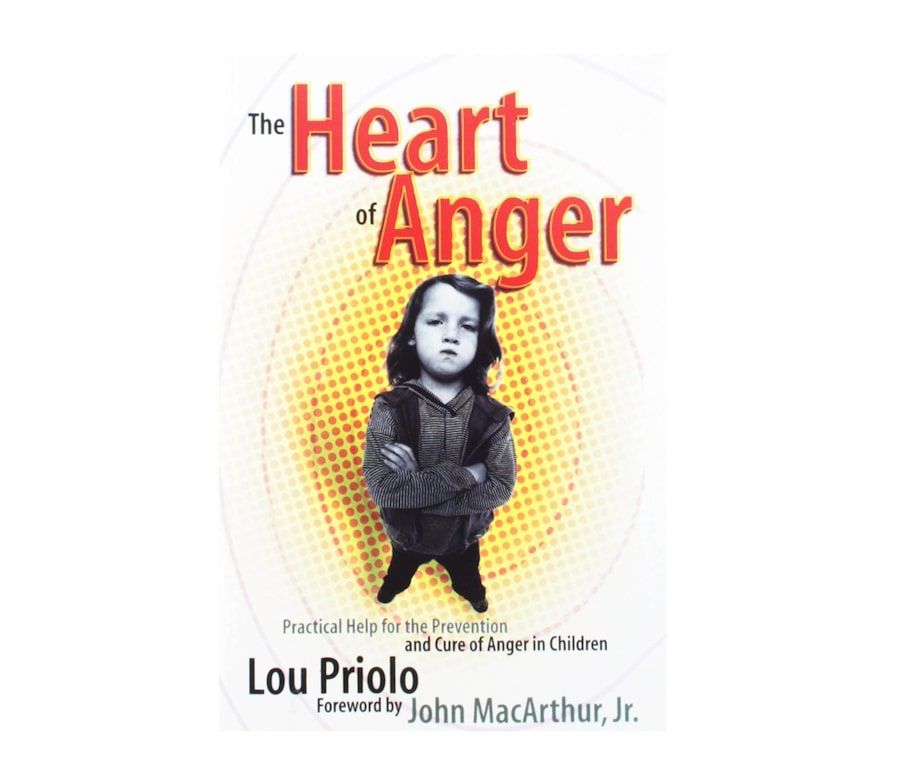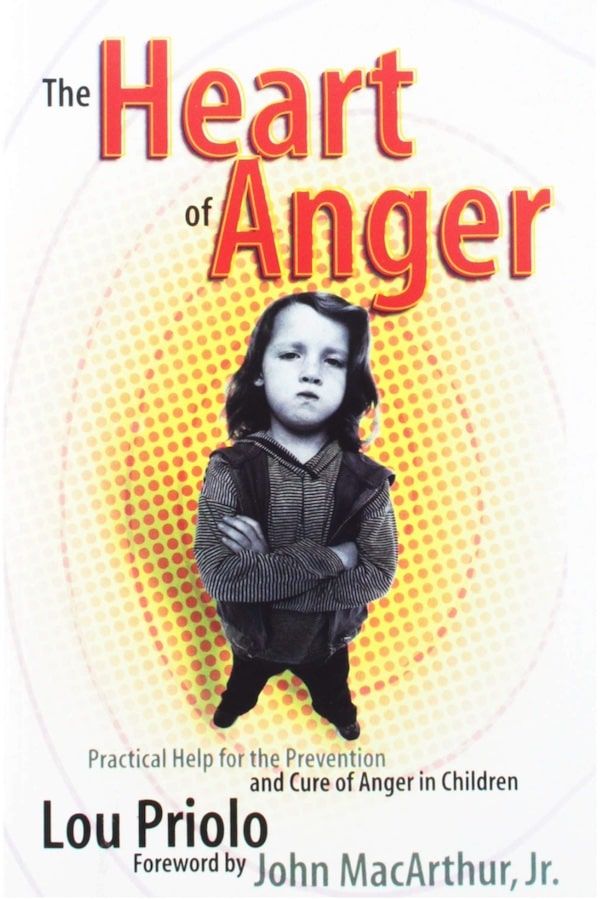The Heart of Anger
The Heart of Anger was written to help Christian parents understand, correct, and prevent anger in their children in a biblical manner.

The Heart of Anger is a 202 page book written by Lou Priolo and published by Calvary Press in 1997. I first met Lou Priolo, his wife Kim, and his two daughters about 10 years after he had written this book. His counseling resources are second to none. The Heart of Anger may be the best book available today to help parents train and guide their angry children.
1. Purpose of the Heart of Anger
Priolo explains that he wrote this book as a "basic tool kit" to help parents understand, correct, and prevent anger in their children.
2. Content of the Heart of Anger
In chapter one, the author explains that many wrong behavior and attitudes stem from the problem of anger. And if left unchecked, anger can lead to outright rebellion. The author explains the dangers of having a "child-centered" home and not a "God-centered" home. A child-oriented home and anger left unchecked will produce an angry child.
Chapter two focuses on the many ways parents can provoke their children to anger. Priolo makes clear that the child has full responsibility and culpability of his sinful anger. However, parents can avoid provoke their children to help ease their child's task to put off sinful anger.
In chapter three, two symptoms of anger are described: ventilation (blowing up) and internalization (clamming up). When we blow up, we destroy others. When we clam up, we destroy ourselves. Instead of destroying others and ourselves, we must devote our effort to correct the underlying problem which is a lack of biblical communication. The "communication pie" is given: (1) words, (2) tone of voice, and (3) non-verbal communication.
The focus of chapter four is to persuade the reader on the importance of training our children. Right behavior and right attitudes require training. And the parents must be well-trained and well-disciplined before they are prepared to train and teach their own children.
Chapter five directs the principle of training to practicing biblical communication. Training requires first an identification of sinful forms of communication. The next step is the confession of the sin and the request for forgiveness. The final step is to form, rehearse, and deliver an appropriate biblical alternative. This bibilical alternative must include (1) the right words, (2) the proper tone of voice, and (3) the appropriate non-verbal communication.
Priolo suggests an instruction tool in chapter six that he calls an "Anger Journal." The focus of the anger journal is to identify the external manifestations of sinful anger. The child is asked to write down the answers to four questions.
- What happened that provoked me to anger?
- What did I say and/or do when I became angry?
- What does the Bible say about what I did and/or said when I became angry?
- What should I have done/said instead when I became angry?
Chapter seven directs the focus on the internal heart. The notion is that what comes out of our mouths are a manifestation of what is in our hearts. We need to recognize what are lawful and unlawful desires. So a "Heart Journal" requires answering three additional questions.
- What did I say to myself (desire in my heart) when I became angry?
- What does the Bible say about what I wanted when I became angry?
- What should I have wanted more than my own selfish idolatrous desire?
Chapter eight expounds on the foundation laid in chapter seven. Priolo helps the reader to take effort to diagnose the anger problem in biblical terms. For example, "That's not fair." is bad theology because it is a false accusation based on Philippians 4:8 and 2 Timothy 3:2,3. It identifies that the source of sinful anger is our pleasures and desires. The goal is to replace our original thoughts and desires with appropriate thoughts and desires based on Scripture.
In chapter nine, the author introduces the toxic effects of manipulation and how to recognize manipulation in our children. Regarding how manipulation relate to anger, Priolo explains. "The very same lusts which tempt you to become sinfully angry when you do not bet your way, tempt you to employ sinful means to obtain what you want." (124) The author then gives practical steps on how to dismantle our child's manipulation in chapter ten.
Priolo gives a suggestion called the "Think Room" in chapter eleven. This is a designated place where your child can study and think how to speak and respond the parents in a biblical manner. He also argues that it is important for our children to be able to make appeals to parents. How to do this biblically is reviewed in chapter twelve.
Priolo concludes his book with a thirteenth chapter to encourage parents to do the hard wook and practice the principles, tactics, and strategies presented in the book. He also reminds the reader that results take time. It is important to think, act, and speak biblically and to persevere despite disappointment that may be felt with the absence of quick wins.
3. Commentary of the Heart of Anger
Reading any of Lou Priolo's books is a joy and privilege. His books are very well written. They are biblical, and they are practical. His second chapter on the 25 ways parents provoke their children to anger are worth the price of admission alone.
Some of his diagrams of key concepts are extremely helpful. For example the diagram on page 54 illustrates well why a lack of communication is a central obstacle to anger. The "communication pie" is a good memory device to ingrain to the reader that biblical communication involves the right words, the proper tone of voice, and appropriate non-verbal communication.
Priolo's suggested questions to ask and steps to employ are simply to understand. While employing these methods may require time and effort, the clarity and precision facilitate its application.
There are two suggestions I would give, should Priolo decide on releasing an updated edition to this book. First, it would help if Priolo acknowledges and provides direction for parents with children having special needs. The book assumes that the child has the mental capacity to think and diagnose their external and internal manifestations of anger. There are many parents with children with mental illness or disability that would benefit from additional guidance.
A second suggestion would be to clarify the importance of showing grace in our parenting. This is especially true when our children have yet to make professions of faith and need the regular inoculation of the gospel of Jesus Christ and how being united with Christ relates to our spiritual growth.
My only other quibble is that the activities included in a separate workbook published in 2015 were omitted from this original work.
4. Comparison Analysis
There are a number of Christian books on parenting. Give Them Grace by Elyse Fitzpatrick and Jessica Thompson is one I highly recommend. Paul Tripp's book, Age of Opportunity, is another excellent book that encourage parents with children in their adolescent years. There are also general Christian books on anger including Powlinson's Good and Angry. Although there are many excellent books on parenting and anger, I am not aware of a better book that gives biblical counsel to parents dealing with angry children.
5. Final Thoughts on the Heart of Anger
The Heart of Anger succeeds in providing Christian parents with a "basic tool kit" on preventing and addressing anger in children. It is biblical, practical, and well-written. I agree with Jay Adams. "Every nouthetic counselor will want his own copy as well as some to give away or lend. Pastors will put it in their libraries and church bookstores. Parents will devour it." (13)

The Heart of Anger
by Lou Priolo | Calvary Press (1997)




